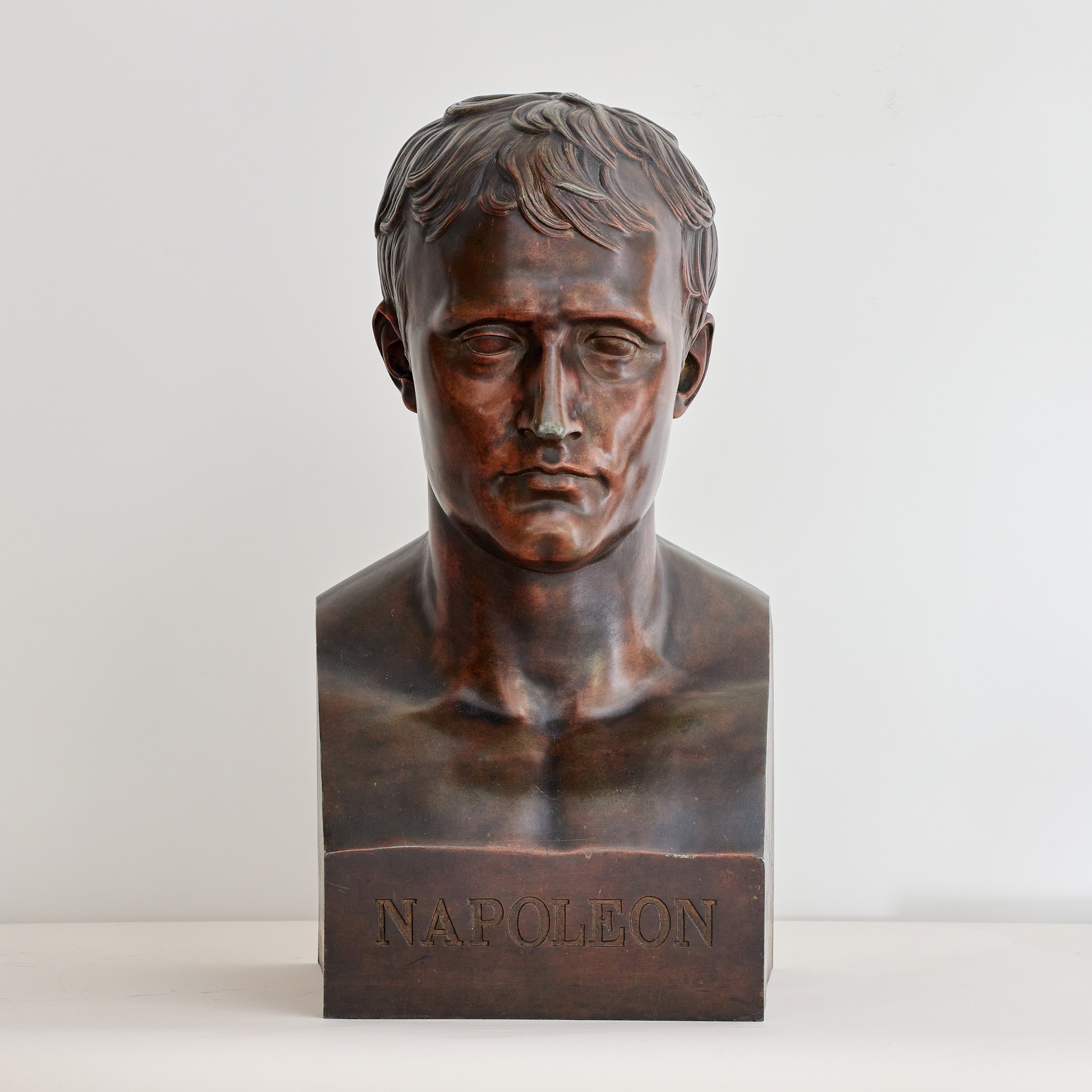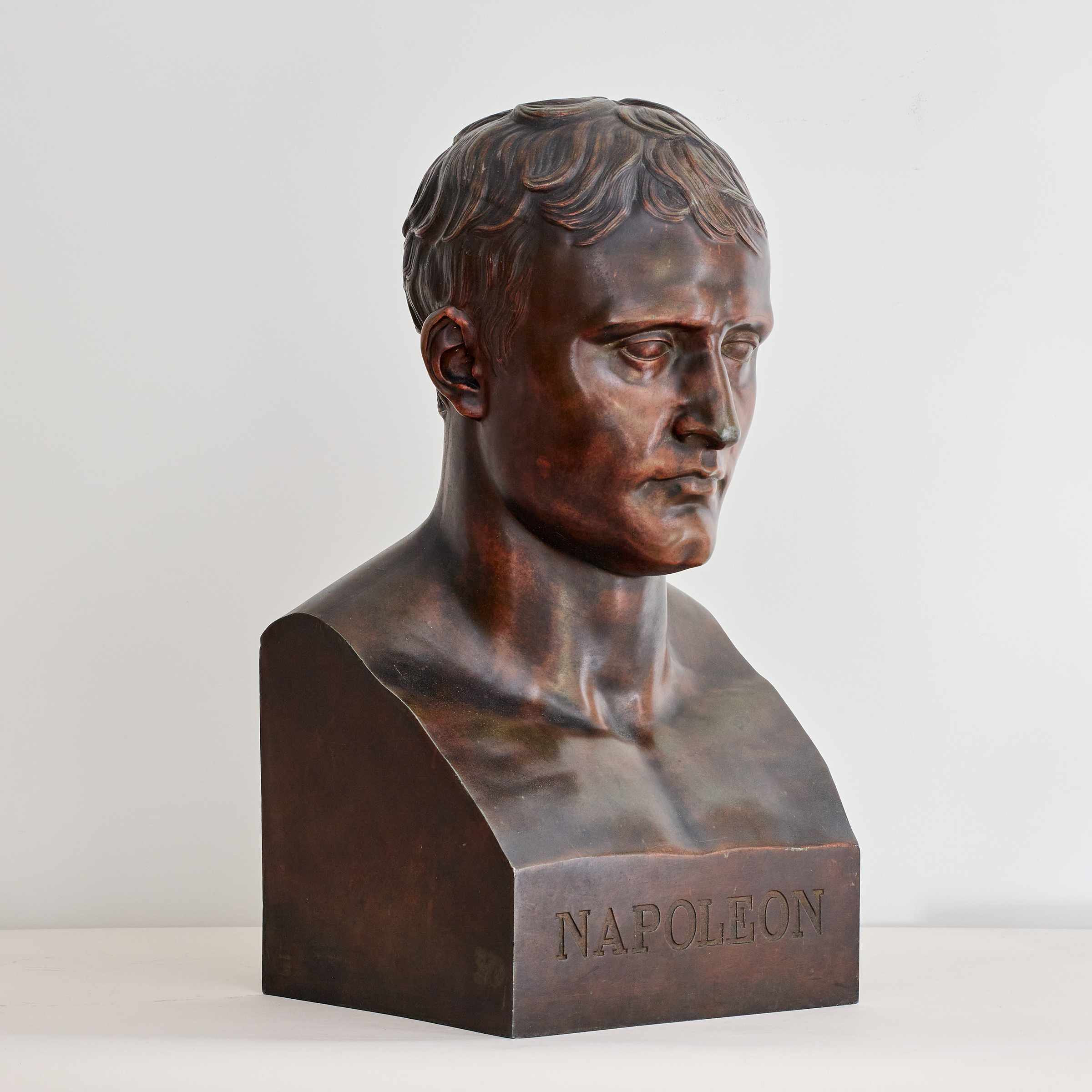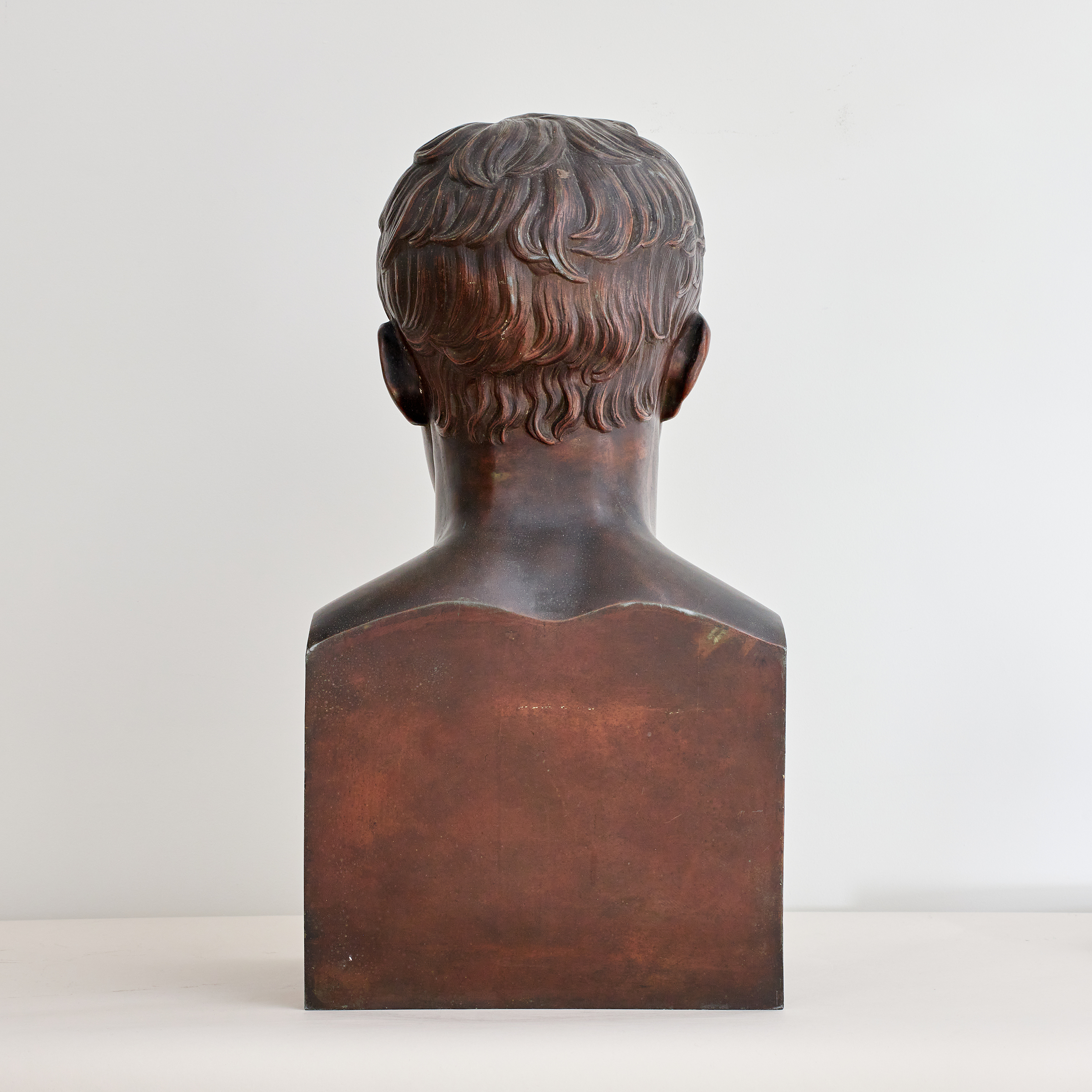Bronze bust of Napoleon Bonaparte I, after Antoine-Denis Chaudet, late 19th Century
Date: late 19th Century
Materials: bronze
Dimensions: 31cm wide x 25cm deep x 58cm high
Code: RJK-00016
£4,250.00
EnquireMore about this product
"The iconography of Napoleon was focused on creating a link between contemporary France and the great civilisations of the past. His military conquests brought important works of art into French collections, emphasising his position as inheritor of a European tradition. The Empire style he promoted adapted the symbols and ornament of Imperial Rome and this portrait, one of a thousand versions, imitates that of a Roman emperor, an image that was at the very heart of the iconography of Napoleonic Europe.
Chaudet made a plaster model for this portrait in 1799 and its ‘herm’ form follows that of Roman imperial portraits, with the shoulders cut and straight sides, and this was the image preferred by the Emperor Napoleon himself (1769-1821). 1,200 marble versions were carved by the Carrara workshops between 1807 and 1809 on the orders of the Emperor's sister, Elisa Baciocchi as official portraits for public buildings in France. The majority were destroyed when the Bourbon monarchy was restored in 1814, an example of which we sold last year.
Examples in marble can be found in the Victoria and Albert Museum, London (museum no. A.17-1948). For further reference and examples, see:
Baker, M. In: Jervis., ed. Art and Design in Europe and America 1800-1900, London, V&A, 1987, pp. 28-29;
Antour de David d'Angers, Sculptures du XVIIIe Siècle et du dèbut du XIXe dans les collections des musèes d'Angers. Catalogue of exhibitions held at the Musèe des Beaux-Arts. 3 Dec 1994-5, March 1995. pp. 64-65;
Cf. Leeuwenberg, J. Beeldhouwkunst in het Rijksmuseum, Amsterdam, 1973, p. 435. cat. no. 759;
Cf. Curtus, P., Friedman, T. eds. Leeds' Sculpture Collections: Illustrated Concise Catalogue, Leeds, 1996, p. 4;
Cf. Hubert, G. La sculpture dans l'Italie Napoleonienne, Paris, 1964, pp. 342-9.
Godfrey, Richard, James Gillray: the art of caricature, London, Tate Britain, 2001."
Chaudet made a plaster model for this portrait in 1799 and its ‘herm’ form follows that of Roman imperial portraits, with the shoulders cut and straight sides, and this was the image preferred by the Emperor Napoleon himself (1769-1821). 1,200 marble versions were carved by the Carrara workshops between 1807 and 1809 on the orders of the Emperor's sister, Elisa Baciocchi as official portraits for public buildings in France. The majority were destroyed when the Bourbon monarchy was restored in 1814, an example of which we sold last year.
Examples in marble can be found in the Victoria and Albert Museum, London (museum no. A.17-1948). For further reference and examples, see:
Baker, M. In: Jervis., ed. Art and Design in Europe and America 1800-1900, London, V&A, 1987, pp. 28-29;
Antour de David d'Angers, Sculptures du XVIIIe Siècle et du dèbut du XIXe dans les collections des musèes d'Angers. Catalogue of exhibitions held at the Musèe des Beaux-Arts. 3 Dec 1994-5, March 1995. pp. 64-65;
Cf. Leeuwenberg, J. Beeldhouwkunst in het Rijksmuseum, Amsterdam, 1973, p. 435. cat. no. 759;
Cf. Curtus, P., Friedman, T. eds. Leeds' Sculpture Collections: Illustrated Concise Catalogue, Leeds, 1996, p. 4;
Cf. Hubert, G. La sculpture dans l'Italie Napoleonienne, Paris, 1964, pp. 342-9.
Godfrey, Richard, James Gillray: the art of caricature, London, Tate Britain, 2001."





